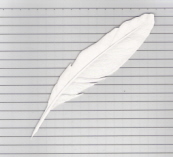Section 1 Taking Better Photographs
- Select the highest resolution and lowest JPEG compression settings on the camera. Reduce and edit image on the PC. This may imply that one should actually save all images in TIFF format as that is non-lossy and results in the best image to then edit. This in turn means getting the largest and fastest memory card that one can for the camera one has purchased.
- Back up images onto a CD or DVD or external hard drive.
- Composition
- decide on the subject and make it in perfect focus
- with people, make sure auto-focus is on the eyes
- place subject in top/bottom or left/right third of frame
- fill the frame with the subject
- Digital cameras have a delay between pressing the shutter button and actually taking the picture (because of the internal processing that is required).
- Use the LCD display rather than the optical finder
- Learn to use the manual settings
- Blurring
- poor focus
- camera movement
- moving subject
- higher ISO settings allow faster shutter speeds but yield more grainy pictures
- remember shutter lag and hold camera steady until picture is taken
- use tripod + timer (pressing button can move camera)
- use manual focus when auto-focus is problematic
- to get a large depth of field set the f-number to 11 or 16 (or use landscape mode)
- use focus-lock to set focus before taking picture
- only use the optical zoom on the camera (use digital zoom when editing the image on the PC)
- Leave the flash set to Auto
- Use flash to fill-in subject when the background is light/bright.
- Reduce power of flash if camera has this feature.
Section 2 Understanding File Formats
- JPEG - good colors, lossy, popular, (don't use if editing images), use highest setting
- JPEG2000 - non-lossy, good file compression, support for format is low
- TIFF - lossless, medium level file compression
- RAW - huge files, best use of color information, poor software support.
- a JPG is about 1/3 the size of a TIFF
Section 3 Transferring Images to Your PC
Section 4 Printing Tips
Section 5 Simple Techniques
Section 6 Special Techniques
Section 7 Restoring Photographs
Section 8 Recovering Lost Photographs
Section 9 How to Buy a Digital Camera
Section 10 Buying a Scanner
|
